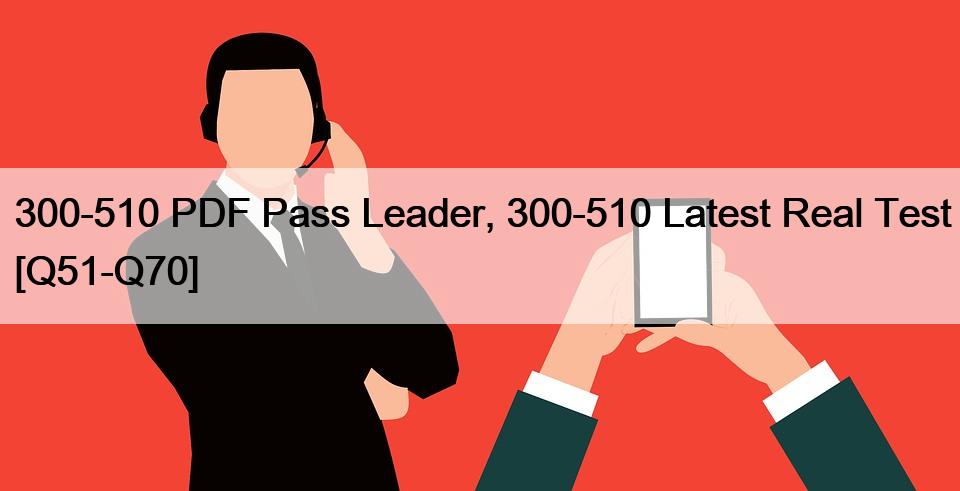|
This page was exported from Free Exam Dumps Collection
[ http://free.examcollectionpass.com ] Export date: Sat Nov 30 19:05:13 2024 / +0000 GMT |
300-510 PDF Pass Leader, 300-510 Latest Real Test [Q51-Q70] 300-510 PDF Pass Leader, 300-510 Latest Real Test Valid 300-510 Test Answers & 300-510 Exam PDF Audience, Prerequisites, and Objectives for Implementing Cisco Service Provider Advanced Routing Solutions TrainingParticularly, this course for exam 300-510 invigorates the needs of network administrators, project managers, system engineers, and network designers. The initial requirements they need to meet before undertaking the training are such as having at least intermediate knowledge covering Cisco IOS or Cisco IOS XE as well as Cisco IOS XR Software that touches on the configuration. More requirements include awareness of networking concerning IPv6 and IPv4 TCP/IP, intermediate knowledge about routing protocols of OSPF, BGP, and ISIS, and comprehension regarding MPLS technologies, multicast technologies, and segment routing. Also, there are other vital courses that one ought to have passed through before this specific training. This is to gain the proper perspective about what they are about to learn and ensure this goes on effectively. Overall, on completing this 300-510 exam course, you will have mastered the following objectives:
The skills covered when practicing with the hands-on labs for exam 300-510 include executing Special Area Types for OSPF, implementing Multiarea IS-IS, route redistribution, route selection for BGP, route reflectors, security options for BGP, and troubleshooting routing protocols. Others are executing MPLS within the SP core, deploying MPLS TE for Cisco, configuring and authenticating segment routing for IGP, and operating with tunnels aimed at IPv6. Candidates will also draw practical skills in the areas of enabling and optimizing PIM-SM, executing enhancements for PIM-SM, and putting into practice RP distribution. Who should take the Implementing Cisco Service Provider Advanced Routing Solutions (300-510 SPRI) ExamPeople who wish to explore the power of the dynamic culture of the Cisco Learning Network to jump-start their certification and lifelong learning goals should take this exam. Those who want to get useful tools for IT training for all Cisco certifications should also get this certification. People with prior knowledge of integrating VPN services, including Layer 2, Layer 3, and IPv6, from the service provider are highly recommended to take this exam and get themselves certified from Cisco. List of the target audience for this exam:
Test 300-510, also referred to as SPRI, is a Cisco exam that is about the execution of advanced solutions for routing for Service Providers. Someone who passes it ends up with the Cisco Certified Specialist - Service Provider Advanced Routing Implementation certificate, which is specific only to this test. The other main certificate achieved upon nailing 300-510 as well is the CCNP Service Provider.
300-510 Dumps Ensure Your Passing: https://www.examcollectionpass.com/Cisco/300-510-practice-exam-dumps.html |
|
Post date: 2022-10-29 16:01:58 Post date GMT: 2022-10-29 16:01:58 Post modified date: 2022-10-29 16:01:58 Post modified date GMT: 2022-10-29 16:01:58 |